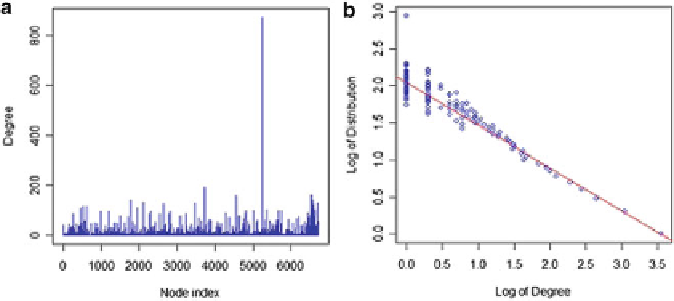Information Technology Reference
In-Depth Information
edge). So, imagining that we just need to have a graph in which the edges exist at
all times, we could consider the possible values of the edge. We have suggested that
it is better to approach the analysis as an extraction from the original network in
which the urban area is easier to visualize.
12.4
Commuters Networks as a Scale-Free Network
Previously, we observed that the commuters' network has both a star topology and
small world properties. In this section, we explain an approach that exploits these
two qualities directly.
A network is said to be scale-free if the distribution of node degrees in the graph
follows a power law. More formally, the probability distribution of node degrees,
p
(
k
)
, has the following form:
k
−
γ
p
(
k
)
∼
where
k
is the node degree and
is the power law exponent. The principal
characteristic of a scale-free network is that a few nodes have many connections
while the majority of nodes have very few connections. The commuter network is,
for the most part, scale free in nature. A few large cities import a number of workers
every day while the vast majority of cities import very few workers. However, not
all areas of the graph are scale free and the exponent y still needs to be determined.
The areas of the graph that do not have a scale-free structure often correspond to
places where polycentric activity occurs in the network.
Figure
12.14
a shows the commuter network where the links have been already
filtered by the number of commuters. The nodes in this graph are cities and directed
edges exist if the cities exchange commuters. In the plot, the y-axis is the node
degree and the x-axis is the node index. There are a few nodes with a very high
degree, however, most nodes have low degree.
γ
Fig. 12.14
(
a
) Degree distribution in network. (
b
) log-log plot as a straight line in migration
network

Search WWH ::

Custom Search